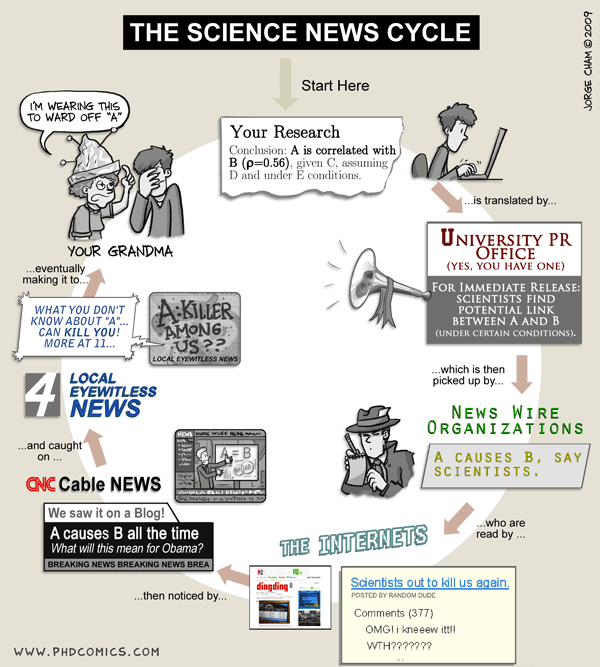By Tamara Vital
Scientists communicate their findings to one another through the primary literature: papers that describe their work and are reviewed by other scientists in the field before being published in scientific journals. When I first started reading scientific papers as a young college student, I enjoyed the science, but wondered how the papers could be relatively short and yet so incredibly dense with information. Later, when I started doing research in the lab myself I realized why: scientific papers are the culmination of many years of work, condensed down into figures and text that fit into the limited space journals have for publishing papers. Reading and interpreting the primary scientific literature is a skill that requires time, patience, and often, large cups of coffee. Most people don’t have the time to assess the primary scientific literature and rely on news and media outlets for information about the latest scientific advances. They are then bombarded, in the news and on social media, with provocative headlines that seem to assert lofty scientific conclusions and give the sort of health advice that usually requires years of training and a medical degree.

So where is one to go for accurate, comprehensive, and approachable science news coverage? Here is a quick list to get you started:
General news outlets:
I’ll often browse the science and health portals on the websites of reputable news sources like The New York Times, NPR, and BBC for interesting new stories. Science coverage by general news outlets will usually summarize a study as well as provide social, public health, or political context. But a word of caution– science writing in general news outlets often distills complex scientific findings down to the most digestible and exciting headlines. So while these sources are a good place to start, really understanding the science can require going further in depth and getting more specialized.
Science-oriented magazines and websites:
Science-oriented sources like Popular Science, Science News, Scientific American, and National Geographic can usually dedicate more space to coverage of complex scientific topics. These magazines also tend to cover a wide range of scientific topics from astronomy and physics to ecology and zoology. The range of topics covered allows a reader broad exposure to scientific topics, but this breadth may limit the depth to which any one branch of scientific research is covered.
Go straight to the source:
The websites of scientific journals like Science, Nature, and Cell feature podcasts and news stories written by scientists for the general public. The websites of the National Institutes of Health and NASA also highlight recent work in their fields accurately and concisely. These sources will generally point the reader towards the original paper, which is after all, the ultimate source for any scientific finding.
Looking for more? The American Association for the Advancement of Science AAAS Kavli Science Journalism Awards recognizes outstanding science reporting in a number of different categories. And of course, coverage of exciting, new science can always be found here on the DNA Day Blog!
Edited by Julia DiFiore
